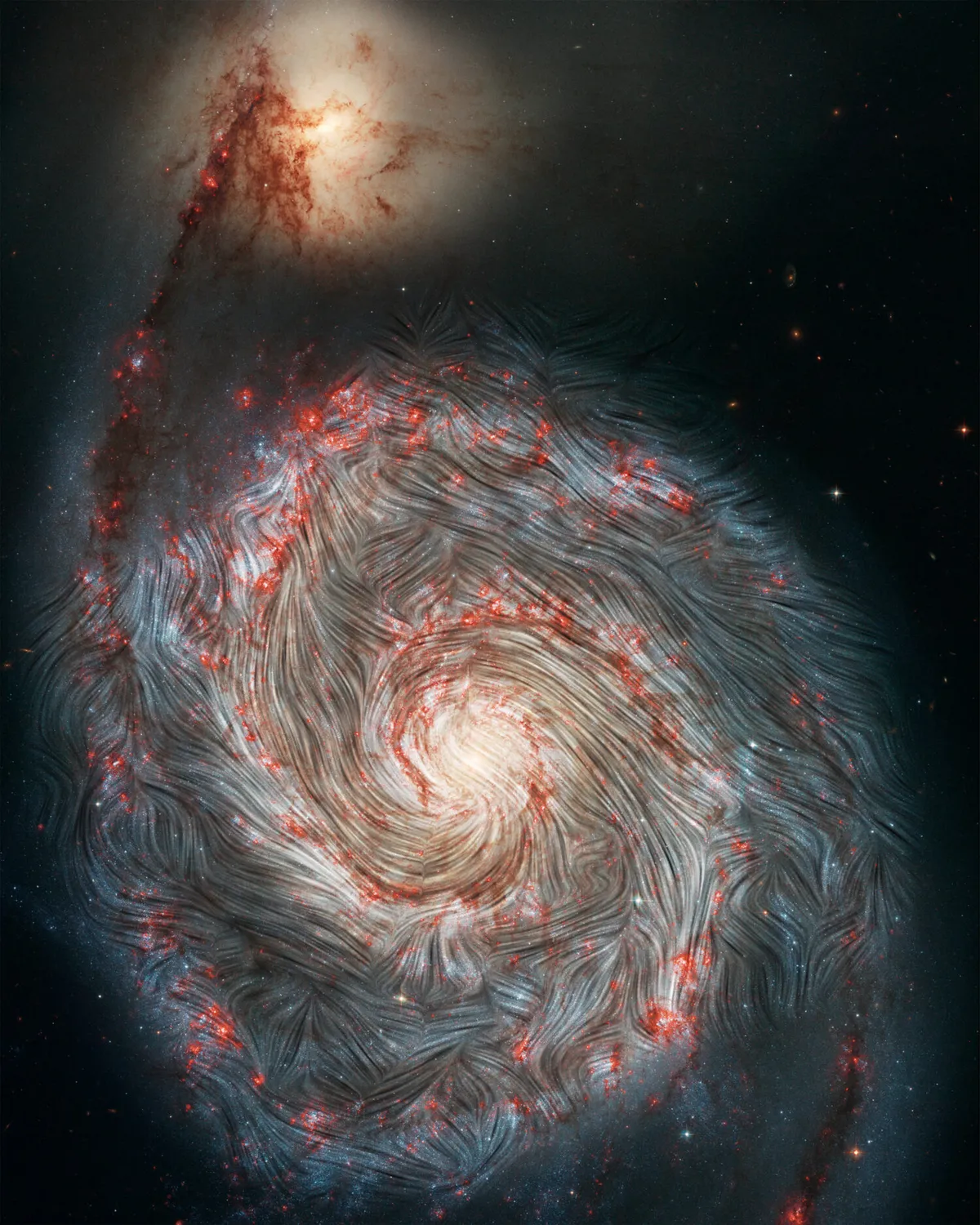
From its vantage point aboard a Boeing 747SP, 12km above Earth, NASA’s Stratospheric Observatory for Infrared Astronomy (SOFIA) has revealed the hidden mayhem unfolding in the Whirlpool Galaxy, M51, in this image of magnetic field lines imposed on a Hubble Space Telescope capture of the galaxy.
By mapping the magnetic fields that course through its graceful, curling arms SOFIA’s far-infrared instrument, the High-Resolution Airborne Wideband Camera (HAWC+), uncovers a far more chaotic picture than suggested by previous radio observations.
- See more astrophotography galleries
The camera – which detects the polarised light emitted as spinning dust grains align in the presence of magnetic fields – shows that while the fields are relatively orderly near the supermassive black hole at the galaxy’s core, things get far more turbulent in the outer spiral arms, where the streamlines weave back and forth across the structure.
Hundreds of red-pink areas of star formation, gas super-heated by supernova explosions and the Whirlpool’s small, yellow neighbouring galaxy NGC 5195 may all play a part in the disarray, but we’re only just beginning to understand the role magnetic fields play in star and galaxy evolution.
Image stats
Observatories Hubble Space Telescope/SOFIA
Image release date 14 JANUARY 2021
Image creditNASA/the SOFIA science team/A. Borlaff/NASA/ESA/S. Beckwith (STScI) and the Hubble Heritage Team (STScI/AURA)
